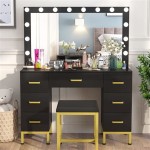Two-Way Mirror Shadow Box: Illusions and Interactive Art
The two-way mirror shadow box is a captivating art form that merges the principles of optics, lighting, and sculptural arrangement to create intriguing illusions of depth and perspective. This type of art piece, sometimes referred to as an infinity mirror box or a phantom mirror box, utilizes a partially reflective mirror, often called a two-way mirror or one-way mirror, in conjunction with strategically placed objects and lighting to generate a seemingly endless visual space within a confined volume. The resulting effect is often mesmerizing, inviting viewers to contemplate the nature of perception and the boundaries between reality and illusion.
The functionality of a two-way mirror shadow box relies heavily on the principles of light transmission and reflection. A two-way mirror is a specialized type of glass that is coated with a thin layer of metallic substance, typically aluminum or silver. This coating is applied so thinly that it allows a portion of the light to pass through while simultaneously reflecting another portion. The ratio of light transmitted to light reflected is often around 50/50, though it can vary depending on the specific construction of the mirror. The key to the illusion lies in the difference in illumination levels on either side of the mirror. The side with brighter illumination will appear reflective, as the reflected light overwhelms the transmitted light. Conversely, the side with dimmer illumination will appear transparent, as the transmitted light becomes more visible. In a shadow box, this principle is exploited to create the illusion of depth and infinity.
The design and construction of a two-way mirror shadow box involve careful consideration of several factors, including the dimensions of the box, the placement of the two-way mirror, the arrangement of objects within the box, and the type and intensity of lighting used. The box itself is typically constructed from materials such as wood, acrylic, or metal. The two-way mirror is then mounted inside the box, usually at the front, creating a barrier between the viewer and the interior space. The objects placed inside the box can range from simple geometric shapes to intricate miniature scenes. These objects reflect repeatedly between the two-way mirror and a fully reflective mirror positioned at the back of the box, creating the illusion of infinite depth.
Key Point 1: The Optical Properties of the Two-Way Mirror
The two-way mirror is the fundamental element responsible for the illusion created within the shadow box. Its ability to both reflect and transmit light simultaneously under different illumination conditions is critical. The metallic coating, generally composed of a thin layer of silver or aluminum, is applied to the glass substrate using techniques like sputtering or vapor deposition. The thickness of this coating is meticulously controlled to achieve the desired balance between reflection and transmission. A thicker coating would result in a more reflective surface, diminishing the transparency effect, while a thinner coating would make the surface too transparent, reducing the reflection. The ideal thickness is determined by the specific application and the desired visual effect.
The perceived effectiveness of a two-way mirror also depends on the ambient lighting conditions. As mentioned previously, a significant difference in illumination is required to achieve the desired effect. If both sides of the mirror are equally illuminated, it will appear largely reflective. In a shadow box, this means that the interior needs to be significantly darker than the viewing area to create the illusion of depth. Therefore, controlling the light source within the box and blocking external light from entering is crucial for maximizing the illusion.
Furthermore, the quality of the mirror itself affects its performance. Imperfections in the glass or the metallic coating can distort the reflected image, reducing the realism of the illusion. High-quality two-way mirrors are manufactured with tight tolerances and undergo rigorous quality control inspections to ensure consistent performance and minimal distortion. Understanding these optical properties is paramount for designing and building an effective two-way mirror shadow box.
Key Point 2: Design and Construction Considerations
The physical design and construction of the shadow box are just as important as the optical properties of the mirror. The box must be structurally sound, light-tight, and aesthetically pleasing. The choice of materials affects both the appearance and the functionality of the box. Wood offers a classic and warm aesthetic, while acrylic provides a sleek and modern look. Metal can be used for a more industrial or minimalist design. Regardless of the material chosen, the box must be constructed with precision to ensure that the mirrors are properly aligned and that there are no light leaks.
The alignment of the mirrors is critical for creating a convincing illusion of depth. Even a slight misalignment can disrupt the reflections and diminish the effect. The mirrors must be perfectly parallel to each other to ensure that the reflected images converge correctly. This requires careful measurement and precise mounting techniques. Furthermore, the mirrors must be securely fastened to the box to prevent them from shifting or vibrating, which can also distort the image.
The interior of the box must be designed to maximize the impact of the illusion. The placement of objects within the box is crucial for creating interesting visual patterns and adding depth to the scene. The objects should be arranged in a way that takes advantage of the reflective properties of the mirrors. For example, placing objects at different distances from the back mirror can create a sense of perspective and make the scene appear more three-dimensional. The color and texture of the objects also play a significant role in the overall aesthetic of the shadow box. Bright colors and contrasting textures can enhance the visual impact of the illusion.
Key Point 3: Lighting Techniques and Effects
Lighting is an indispensable component of the two-way mirror shadow box, playing a crucial role in defining the mood and enhancing the illusion. Strategic use of light can transform a simple arrangement of objects into a captivating visual experience. Different lighting techniques can be employed to create various effects, such as highlighting certain objects, adding depth to the scene, and generating a sense of atmosphere.
Typically, LED lights are favored for illuminating the interior of a shadow box due to their energy efficiency, long lifespan, and ability to produce a wide range of colors. These lights can be strategically positioned to accentuate particular features within the scene. For example, a spotlight can be used to highlight a specific object, while ambient lighting can be used to create a more uniform glow. The color of the light can also be used to create different moods. Warm-toned lights can evoke a sense of comfort and intimacy, while cool-toned lights can create a more ethereal or futuristic atmosphere.
The intensity of the light is another important consideration. A dimmer light will create a more subtle illusion, while a brighter light will create a more dramatic effect. The intensity of the light should be carefully adjusted to achieve the desired balance between reflection and transmission in the two-way mirror. Too much light will make the mirror appear fully reflective, while too little light will make it appear fully transparent. Variable intensity lighting can also be used to create dynamic effects, such as simulating flickering flames or pulsating light.
Furthermore, the angle of the light can be used to create shadows and highlights that add depth and dimension to the scene. By experimenting with different lighting angles, one can create a wide variety of visual effects. Diffused lighting, achieved by bouncing light off a reflective surface, will create a softer and more even illumination, while direct lighting will create sharper shadows and more pronounced highlights. Understanding and mastering these lighting techniques is essential for creating truly captivating two-way mirror shadow boxes.
In conclusion, the creation of a successful two-way mirror shadow box is a multifaceted process that involves a thorough understanding of the optical properties of two-way mirrors, meticulous attention to design and construction details, and skillful application of lighting techniques. The combination of these elements results in an engaging art piece that challenges perceptions and invites exploration into the realm of illusion.

All About Two Way Mirrors

How To Make An Infinity Mirror Or Buy Awesome One

Mirror Offers A Mighty Fright Aday

How To Make An Infinity Mirror 13 Steps With Pictures Wikihow

How To Make An Infinity Mirror 13 Steps With Pictures Wikihow

How To Make A Mirror Tv Step By Instructions

How To Make An Infinity Mirror Or Buy Awesome One

How To Make An Led Infinity Illusion Mirror

How To Make An Infinity Mirror 13 Steps With Pictures Wikihow

Dollar Tree Diy Shadow Box I Took It 5 By 7 Frame And Remove The Back Glued Glass In A Matching Siz








